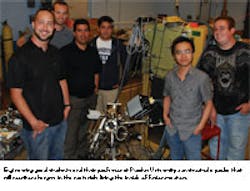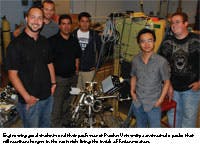Probe developed at Purdue monitors tokamak reactor linings
Resources: |
Engineers and nuclear scientists have a host of challenges to overcome before they build a working model of a tokamak, a fusion-powered reactor that could generate 10 times the power of a conventional fission reactor using fuel derived from seawater. One problem is constructing reactor walls and coatings that stand up to interactions with the plasma contained within. These plasmas can reach 100 million degrees Celsius, hot enough to physically change materials they come near.
MAPP will be used on the experimental reactor at Princeton University, the country’s largest spherical tokamak, known as the National Spherical Torus Experiment. The new device replaces the previous investigational method of lining inner reactor walls with test specimens of materials that are removed and checked after a year of operation and hundreds of tokamak experiments. MAPP will let researchers see results and changes in materials just minutes after each experiment. The new probe will also let scientists from anywhere in the world program and use it through a Web site based at Purdue.

